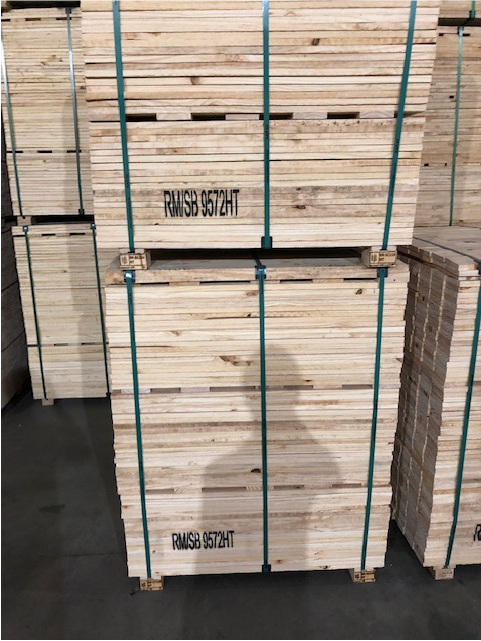Our Mission Statement
As a responsible partner TP delivers to clients, employees and the industries we serve the confidence to drive value through the effective use of our diverse professional team.
As a responsible partner TP delivers to clients, employees and the industries we serve the confidence to drive value through the effective use of our diverse professional team.
Wisdom from our Founding Fathers: George Mason
"How easy it is to persuade men to sign anything by which they can't be affected!"
"A few years' experience will convince us that those things which at the time they happened we regarded as our greatest misfortunes have proved our greatest blessings."
"In all our associations; in all our agreements let us never lose sight of this fundamental maxim that all power was originally lodged in, and consequently is derived from, the people."
"No free government, or the blessings of liberty, can be preserved to any people, but by a firm adherence to justice, moderation, temperance, frugality and virtue, and by frequent recurrence to fundamental principles."
"To disarm the people is the best and most effectual way to enslave them."



Handling Imported Material for IPPC Related Use
With the shortage of lumber these days, many companies are looking for options to maintain their heat treated(HT) lumber inventories. Some operations have looked offshore to supplement their current domestic supplies with imported HT material. This is allowable only if the exporting mill is monitored by an American Lumber Standard Committee (ALSC) accredited agency. Once that is determined, there are a couple of options on how this material can be received by the importing facility:
One way is for each piece to be marked with an ALSC accredited HT mark. If this is the situation, then this material can be purchased, received and used in the manufacture of WPM that will receive a U.S. IPPC mark with no other requirements on the material.
A second option, which is gaining in popularity, is to bring in rough lumber through ALSC's Lumber Enforcement Regulation section 6.2.3 which states:
"Unstamped heat treated rough lumber which has been heat treated at one mill or kiln operation and subsequently shipped to a second mill for surfacing or further processing, may be stamped HT or KDHT after processing provided all mills or kiln operations involved have in place an approved quality control program which maintains the identity of the material from heat treatment to final processing and marking, and which can be audited to verify compliance with heat treatment requirements. ALSC shall be informed in writing of each mill approved under this section. At a minimum the written quality control program shall require that:
1. Lumber bundle(s) shall be maintained intact until final processing and marking of the lumber
2. Lumber bundles(s) shall be marked with an identification mark which permits traceability to an approved heat treatment
operation.
3. All facilities involved in the treating and processing of the lumber are audited by ALSC accredited agencies.
4. When multiple accredited agencies audit the different mill or kiln operation, each auditing agency shall be permitted access to review the quality control records of both treating and processing operation to verify compliance."
What this means is heat treated commodity length lumber that is rough four sides can ship directly from mill to facility without an HT mark on each piece as long as certain requirements are met (Points 1-4) and ALSC is notified of this situation through the monitoring agency(TP). Facilities wanting to use this program would need to complete a TP supplied form to document the mill supplying the rough lumber, the markings applied to identify it as HT and the authorized mill representative responsible for conformance on the mill side prior to shipping any material. The receiving facility's information must also be included on this form, so that there is a verifiable chain of custody for the material. This completed form is then submitted to the TP WPM Manager to verify that both the supplying and receiving operations are being monitored by an ALSC accredited agency. Many times, TP is the monitoring agency for both the supplying mill and receiving facility so this is typically not an issue. Once the paperwork is approved and on file at the receiving facility, that operation can start receiving rough lumber from the documented mill in conformance with lumber regulation 6.2.3. Rough commodity-length HT lumber shipped with only a bundle mark and processed further (i.e. cut, ripped, etc.), cannot be used in-house for WPM production receiving an IPPC mark until each piece receives an HT mark somewhere in the receiving facility’s processes. This HT mark can be added by the receiving facility at any point in their process, once the material is on site. Alternatively, they can stipulate to the originating mill, that the rough commodity-length HT lumber needs an HT mark on each piece before shipping.
6.2.3 is meant to apply to a mill's direct shipment of rough lumber or components to a processor and not for open market distribution based on the minutes of an ALSC meeting regarding this. Brokers can facilitate the movement of a direct shipment from mill to processor or manufacturer, but cannot place material into a distribution situation where shipments are split apart or the processor/manufacturer, buying the shipment, is not known prior to leaving the mill.
In other words, it can move from mill A to processor B or WPM manufacturer. It cannot move from Mill A to Distribution B to processors/manufacturers C, D, E, etc.
What is most applicable to the WPM industry is the 2013 exception ALSC came out with to this regulation:
“The production of rough heat-treated lumber at one mill that is processed into components and where no further processing of the components will take place is acceptable for use by a second mill or facility when the following conditions are met:
This allows precut, rough, HT components to ship from a mill with only a bundle mark, so long as the material that is received by the purchasing facility, is used in-house for the manufacture of WPM that would be receiving an IPPC mark.
Containers of imported precut components coming into the U.S. can move through an offloading situation where the material can be stripped from a container and then loaded onto trucks going to the WPM manufacturer. Components not able to fit on the initial truck can be loaded onto another truck and sent with other items to the manufacturer who purchased the original container, but cannot be sold into the open market and represented as heat treated. For this reason, rough precut components should be shipped in a way where the entirety of the container(s) go to the manufacturer it was sold to. Otherwise, it cannot be considered heat treated by ALSC standards.
To summarize, only rough HT Precut components can ship to a WPM facility with a bundle mark (no HT marks on each piece) for in-house manufacture of IPPC marked WPM without requiring HT stamps to be applied first. Rough, commodity length HT lumber requiring further processing is not allowed to be used this way until an HT stamp is applied somewhere in its processing.